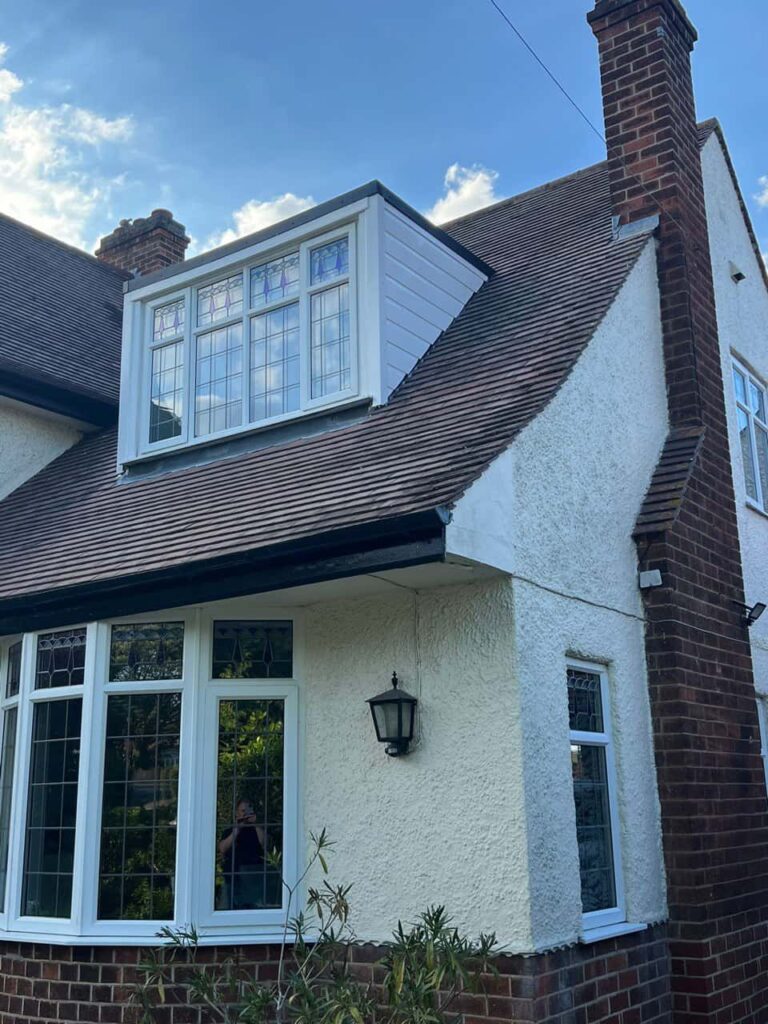Few roofing problems are as frustrating as intermittent leaks. They seem to appear only during certain weather conditions—perhaps after heavy rain or strong wind—and then vanish just as suddenly. These unpredictable leaks can cause hidden damage long before they’re detected, leading to damp patches, rotting timbers, and even mould growth. At Petersfield Roofing Repairs, we help homeowners in Petersfield, Hampshire, identify and eliminate the root causes of these recurring leaks once and for all.
Understanding Intermittent Roof Leaks
Intermittent roof leaks differ from constant leaks because they’re often triggered by specific conditions. This can make them difficult to trace and repair. They usually occur when a small fault in the roof allows water in under certain angles of wind-driven rain or when prolonged weather saturates the roofing materials.
A roof may appear watertight under normal circumstances, yet still allow moisture through during a storm. Pinpointing the cause requires a careful inspection of every layer—from tiles and flashing to the underlay and roof structure beneath.
Common Causes of Intermittent Roof Leaks
1. Cracked or Displaced Roof Tiles
Even a single cracked or slightly lifted tile can allow rainwater to enter intermittently. The problem might only occur during windy or prolonged rainfall when water is driven beneath the tile surface. Tiles can shift due to temperature changes, age, or previous poor installation, creating small entry points for moisture.
2. Failing Flashing and Roof Joints
Flashing is used around chimneys, valleys, and roof edges to seal gaps. When this metal or lead material becomes corroded, cracked, or detached, water can leak through—especially during heavy rain. In many cases, the flashing only leaks when rain hits from a particular direction.
3. Blocked Gutters and Valleys
Debris, moss, or leaves can block gutters and valleys, preventing proper drainage. When water backs up, it can overflow under tiles or slates and find its way inside. These leaks often appear during long downpours when the drainage system becomes overwhelmed.
4. Condensation and Poor Ventilation
Sometimes, what seems like a leak is actually condensation forming in the loft due to poor ventilation. Moisture builds up when warm, humid air meets the cooler surface of the roof deck. Over time, this can mimic the signs of a leak, particularly in winter.
5. Damaged Roof Membrane or Underlay
Beneath the visible roof covering lies an underlay that provides a secondary barrier against water. When this membrane becomes torn or degraded, water that gets under the tiles can penetrate into the roof space. Intermittent leaks may occur depending on how saturated the outer layer becomes.
6. Roof Penetrations and Fixtures
Areas around skylights, vents, and satellite brackets are particularly vulnerable. The seals around these penetrations can degrade over time, letting in water only during specific wind and rain combinations.
How to Identify the True Source of a Leak
Because intermittent leaks can appear in different locations inside the home, tracing their origin isn’t always straightforward. Water often travels along timbers, beams, or insulation before emerging inside the property. To locate the source accurately:
- Inspect the loft during or immediately after rainfall to spot fresh moisture.
- Look for dark or damp patches on rafters and insulation.
- Check flashing and roof penetrations carefully for cracks or lifting.
- Examine gutters and valleys for blockages or overflow marks.
If the source still isn’t clear, a professional inspection is the safest and most effective solution. Roofers use techniques such as moisture tracing and detailed visual checks to pinpoint problem areas.
Professional Solutions to Stop Intermittent Leaks
At Petersfield Roofing Repairs, we take a systematic approach to eliminate leaks permanently. Depending on the cause, solutions may include:
- Replacing damaged or missing tiles to restore a watertight surface.
- Resealing or replacing flashing around chimneys, valleys, or skylights.
- Cleaning and maintaining gutters and valleys to prevent overflow.
- Repairing or upgrading underlay where it has torn or deteriorated.
- Improving ventilation in the loft to reduce condensation issues.
Each repair is tailored to the specific roof and designed to address both the visible symptoms and the underlying cause.
Preventing Future Roof Leaks
Once the immediate issue is resolved, ongoing care will help prevent recurrence. Homeowners can reduce the risk of leaks by:
- Scheduling regular roof inspections, especially after extreme weather.
- Keeping gutters and roof valleys free of debris.
- Removing moss buildup to improve drainage.
- Checking attic ventilation to avoid condensation.
- Monitoring ceilings and walls for early signs of damp.
Proactive maintenance ensures that your roof remains strong, secure, and weather-resistant all year round.
Conclusion
Intermittent roof leaks may seem minor at first, but left untreated, they can lead to serious water damage and structural decay. Identifying the true source requires expertise and careful inspection of all roof components. For homeowners in Petersfield, Hampshire, Petersfield Roofing Repairs provides reliable, long-term solutions to stop leaks for good. With proper repair and maintenance, your roof can remain fully watertight and protect your home through every season.
Call us on: 01730 771 389
Click here to find out more about Petersfield Roofing Repairs
Click here to complete our contact form and see how we can help with your roofing needs.

